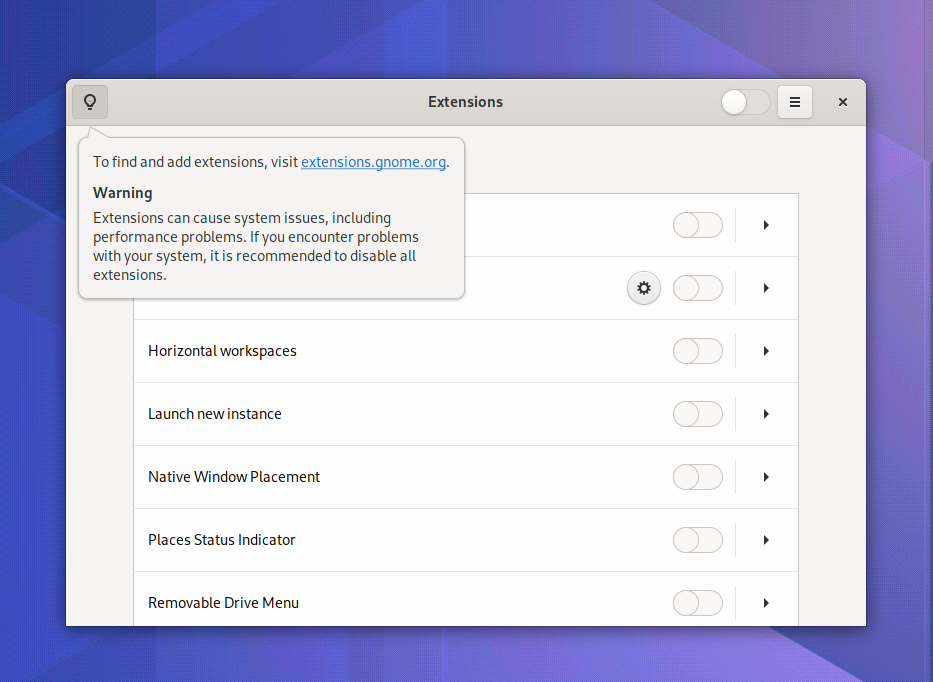As we enter the different feature freezes that come before the 3.36, development starts to wind down, and focus shifts to testing and fixing bugs. Nonetheless, this was an exciting month for Mutter & GNOME Shell! The changes that landed, just in time for the 3.36 release, range from code cleanups, new features, quality-of-life improvements, and preparations for future important features.
GNOME Shell
GNOME Shell’s CSS engine now supports auto. The icon grid spring animation was optimized to reduce the number of relayouts, which reduces CPU usage. Another batch of cleanups, refactorings, and fixes to GNOME Shell’s SCSS files landed.
Thanks to the ongoing efforts of extending and improving Sysprof, various bottlenecks and misbehaviors were identified in GNOME Shell and Mutter, and subsequently fixed. In particular, GNOME Shell now avoids doing I/O operations in the main thread when saving notification data on disk, and the local timezone is now cached, which avoids reading the contents of /etc/localtime more than necessary. As a consequence, GNOME Shell should behave better under heavy I/O loads on the host system.
The blur effect that is used by the new lock screen received further optimizations, and should be quick enough to not have any noticeable performance impact.
Animations are now disabled on various circumstances, such as when using a software renderer, when sharing screen with VNC streams, and when asked to by remote desktop sessions.
Extensions App
GNOME Shell now ships a new app to manage extensions:

This is now the primary way for users to manage extensions. It supports globally disabling extensions, uninstalling and updating user extensions, and toggling individual extensions on or off.
Mutter
Improved Screencasting Support
For a few years, Mutter implements a D-Bus API that allows screencasting. The screencast engine is implemented on top of PipeWire, and exports a PipeWire node that can be read and consumed by other applications.
Until now, this API would download the contents of the monitor framebuffers from the GPU to the system memory, and pass it to PipeWire. However, this was highly inneficient.
PipeWire 0.3 has support to another kind of buffer: DMA buffers. This allows Mutter not to download any framebuffer contents, and instead simply pass a file descriptor (an integer) to the clients. This results in far less CPU usage when screencasting.
A deep dive into how this was implemented will be published in the future.
Stage View Changes
Mutter is based on Clutter, which was originally developed as an application toolkit. Evidently, applications have very different constraints compared to compositors. One such constraint is about how refresh rates should be handled: applications only need to target a single refresh rate, whereas compositors need to draw on different monitors that may be running with different refresh rates.
These differences translate directly on how the code is architectured. Clutter has a single frame clock driving animations, and that does not play well with the problem domain that compositors live in.
During February, a major change on how Mutter handles drawing monitors landed. This is the first step towards achieving the goal of one frame clock per monitor.
Other Improvements
A stream of fixes to culling out rendering is being landed, and it potentially cuts down unnecessary rendering on various scenarios. For example, Mutter detects more cases when windows are completely obscured by other windows, and doesn’t ask them to render themselves.
A nice improvement to how the wallpaper is rendered allows Mutter to save resources when a scale is applied to any monitor.
Various fixes to Wayland subsurfaces support landed, and some small memory leaks were plugged. Lastly, Mutter now avoids flickering when X11 windows either ask to be unredirected or not.
